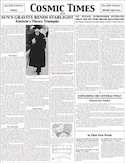Mt. Wilson Astronomer Estimates Milky Way Ten Times Bigger than Thought: But Disputes Suggestions That Spiral Nebulae are Other 'Island Universes'

The Milky Way is a "discoidal" (disc-shaped) galaxy of stars 10 times bigger than astronomers have previously thought, according to Mt. Wilson astronomer Dr. Harlow Shapley. He also claims the Sun is located closer to the edge of the disc than the center. However, he disagrees with the hypotheses of other astronomers that claim dozens of other spiral nebulae observed in the skies are other galaxies or "island universes" that resemble the Milky Way.
Expanding or Contracting? Einstein's Theory Predicts Universe Must be Doing One or the Other, Einstein says Neither
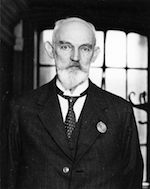
In 1917, Albert Einstein and the Dutch astronomer Willem de Sitter showed that Einstein's general theory of relativity could describe a highly simplified universe. But when it was applied to the real universe full of stars, there was a problem.
In Their Own Words

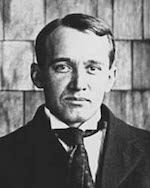
Read quotes from Henrietta Leavitt, Vesto Slipher, and George Paddock on the nature of spiral nebulae and variable stars.
Sun's Gravity Bends Starlight: Einstein's Theory Triumphs
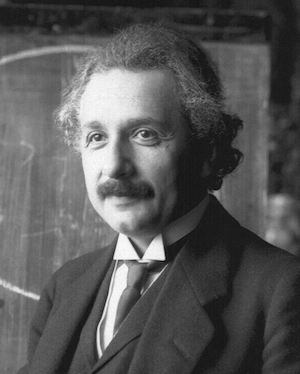
According to Sir Joseph Thompson, "the greatest achievement in the history of human thought" was a prediction made by Dr. Albert Einstein. Dr. Einstein's prediction was proven true during the total eclipse of the sun on May 29, 1919.
Why a Total Solar Eclipse?
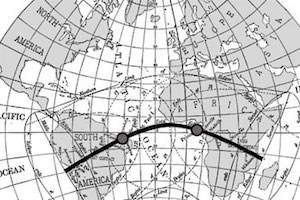
According to predictions by both Sir Isaac Newton and Dr. Albert Einstein, a ray of light from a star very close to the Sun (as seen from Earth) will be bent (deflected) as it passes by the edge of the Sun. Such a deflection would make the star look slightly farther away from the edge of the Sun than it really is.



